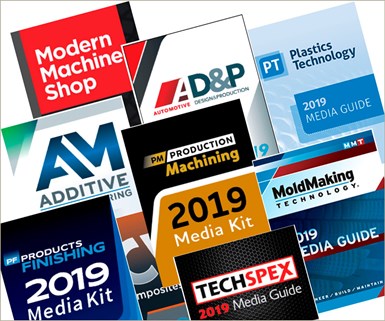Buying B2B Print and Digital Advertising. A Common-Sense Primer.
Buying B2B advertising may not be your full-time job, so here are tips to help do it better.
Buying B2B media isn’t simple, but you can make it fairly rational
By Mark Semmelmayer, CBC
Chief Idea Officer
Pen & Inc. Marketing Communications
My friend, Maralah Rose-Asch, editor and publisher here at Gardner Media, and I were talking about a blog for publication. “No problem,” I said, “Whadda ya have in mind?”

“We’re releasing new media kits. I’m not sure all advertisers understand their value and what to look for in a good media kit.” A fair point. I asked one more question. “What percentage of your advertising is placed by ad agencies?”
After checking inside Gardner, she had an answer that surprised me. According to her folks, about 80% of ads were placed via non-agency sources. Knowing that, a blog on media kit value and basic media planning seemed appropriate.
To be sure, most reading this post already know the ins and outs of media planning and placement. The aim here is to provide some guidance to those who might be relatively new to the game.
My bona fides? I started in broadcast, and, though hired as a writer/account guy at my first agency, my broadcast background occasionally made me a media buyer. In corporate life with Kimberly-Clark, I placed over a million dollars of print and digital B2B media in several different years.
So, here’s the lesson . . .
Media kits and related resources make buying media, if not logical, at least rational. That holds for both print and digital media. Here’s what to look for:
The Media Kit
First and foremost, whatever media outlet you’re considering has to offer editorial/content of value to your targeted buyer. Once you’ve gotten that far in media selection, recognize the “publication’s” media kit is created to paint rosy pictures of value. Fair enough. But what makes a quality media kit? My guidelines:
- Overview of editorial philosophy, objectives and history in that market
- Readership information: how many, what do they do, what they buy
- Editorial calendar, i.e. focus of specific editions
- Ad rate card, including frequency discounts, deadlines and technical specs Details on available value-adds, like readership studies or reader surveys
- Details on mechanism for gathering inquiries to your ad
- Ad rep contact info (more important than you think . . .)
- An audit statement of some nature: I like BPA (Bureau of Publication Audit) statements, but those aren’t always available. Still, a publisher should provide good audience data
The Audit Statement
Many B2B media have circulation audited by BPA International, an independent non-profit. Publishers pay BPA to impartially document readership. But, not every “book” is BPA. There’s the Alliance for Audited Media (AAM), which focuses on cross-platform data, and Audit Bureau of Circulation (ABC), with a European focus.Additionally, some media only provide their own circulation data, especially if they’re very new or very narrowly focused.
Circulation statements reveal media data that strengthens the decision to either advertise with a publication or put ad dollars elsewhere. They’re most useful in direct, side -by-side comparisons. In an audit or circulation statement, at a minimum, you should find:
- Field served by the publication
- Purpose of publication
- Definition of recipient qualification
- Average total qualified circulation
- Business/occupation/title breakout of qualified circulation
- Products bought, used or recommended
To understand what “qualified” means, requests for subscription must meet certain criteria. A qualified publication is free, but the recipient’s company and job description must fall within parameters, established by the pub, to “qualify.”

Without training, folks may buy “blind,” based on comparative costs or claims, rather than audited circulation. Unaudited books sometimes offer lower rates while claiming competitive reach. If editorial is spot on (especially for new pubs), but lacking in verified circulation, they’re still worth consideration. Just acknowledge the pub might circulate fewer copies than claimed. If bought, monitor placement results to make better-informed decisions in the future.
For me, after years in healthcare, I’m a believer in evidence-based decisions. Show me the data!
The Analysis
Facts in hand, you start building a case for media selection. Ad budgets aren’t unlimited. You evaluate options, including digital (since trade pubs are usually both print and online), to craft a media plan with the most bang for the buck.
Your basic goals? Maximum reach, maximum frequency and lowest CPM (cost per thousand) with the buy. Most know what that means, but for newbies, some definitions:
- Reach – The percentage/total number in your target market who will/should see the ad (it helps to have your own market research on market size)
- Frequency – How often targets see the message. More frequent exposure is better . . . and that helps build your brand, too
- CPM – The average cost per thousand readers/visitors reached
In practice, I went a step beyond CPM, creating a Target CPM. Simple methodology. You want electrical engineers in manufacturing and are considering 4 engineer-focused media options. Use circulation statements to toss out reader titles like mechanical engineers, buyers and maintenance supervisor, then convert the remaining numbers into a more target-based cost model.
Of 4 pubs, the lower cost TCPM options should get the business . . . usually. There are considerations, though, outside pure reach/frequency/cost. What bonuses can you get from the pub? Call it “The Exploration.”

The Exploration
Not a lot of detail here . . . just some tips and tricks for getting a “little extra.”
- Get to know your rep. They’re a wealth of information and key to unlocking a better buy
- Ask questions, like what might be done to sweeten the deal, i.e. free readership studies, research or other value-adds
- Explore what can be done to tie print and digital ads together, at discounts or with value-adds
- Explore premium positions. In print, the inside front and back and outside back covers, plus the page facing table of contents. In digital, banners or interstitials on the home page. They cost more, but research shows they yield significant bonuses in readership, clicks and awareness
- If placing media directly, or as an in-house agency, know that, generally, a 15% commission is built into the published “page” rate. That’s an outside agency’s earnings for handling all the media coordination and tasks for you. Placing directly, you can ask about paying the “net” (i.e. 15% lower), rather than published “gross” rate.
That’s about all we can cram into this blog. Here endeth the lesson.
Need more information?
Mark Semmelmayer
Chief Idea Officer
Pen & Inc. Marketing Communications
Saint Simons Island, Georgia
770-354-4737
LinkedIn
About the Author
Mark Semmelmayer, CBC
Mark is a past international chairman of the Business Marketing Association (BMA), the 2015 recipient of BMA’s prestigious G. D. Crain Award and an Inductee into the Business Marketing Hall of Fame. A 40-year B2B marketing pro, including 32-years with Kimberly-Clark, he’s the founder and Chief Idea Officer of Pen & Inc. Marketing Communications, a consultancy in Saint Simons Island, GA.
RELATED CONTENT
-
Mistakes Google Doesn’t Like and How to Stop Making Them
If you publish the best, most relevant content to searchers you most likely will see your pages’ rankings improve. Here are five common reasons pages don’t rank higher — and what you can do to change that.
-
Increase in Technology Also Increases Communications
The speed of technology is causing ripple effects in the global manufacturing community from production all the way to market. Technology is advancing forward exponentially. As a Group Publisher, it is my duty to push the manufacturing audience with information and knowledge that will support them in their quest to be the best manufacturers they can be, using the latest delivery tools.
-
Marketing: New World, New Rules — Think Fast
No matter what approach you use to evaluate your marketing, you have to be willing to act. If something is working, keep going. Things that sort of work may benefit from tweaking and further testing. If something fails out of the gate, abandon it — fast. It’s time for a new marketing scheme—one that is digital, agile and tested. We’ll focus on digital marketing and failing fast. Innovate, experiment, reevaluate, and repeat with these easy steps.


